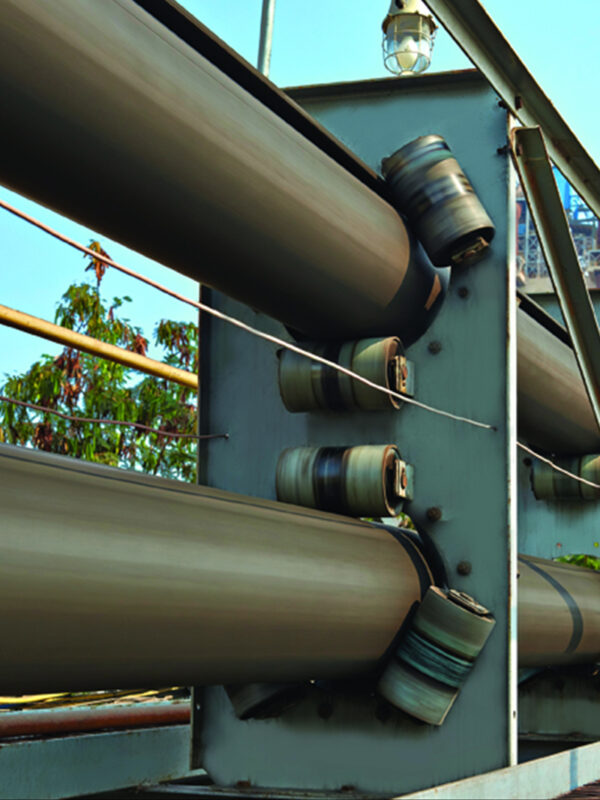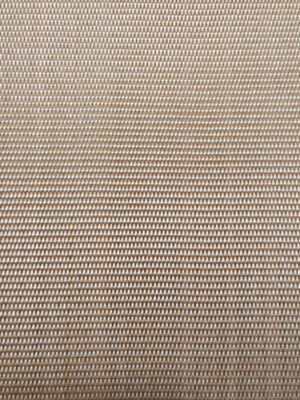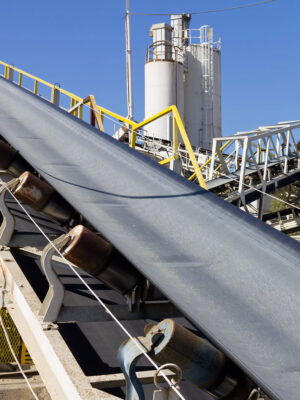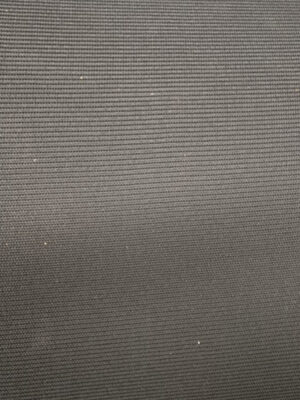Description
Indus Super Duct
Material safety and the hazards due to material spillage caused to the environment has always been a major concern in a conveyor system.
We recommend Indus Super Duct belts where the environment has to be protected from spillage and/or where bulk materials must be conveyed along horizontal and vertical curves in confined spaces. The belt can negotiate tight horizontal and vertical curves. This eliminates or reduces transfer points, which is a big cost saving.
Indus Super Duct belt protect the conveyed material from external influences like rain and wind and protect the environment by avoiding spillage of the conveyed material. Even in the bottom run, no spillage will occur, because the carry side is inside of the tube. The idler supports can be spaced farther apart, because it is self-supporting. An additional conveyor cover is not necessary.
Benefits
- Tight curves and incline angles up to 30° possible, hence optimal adaptation to local features / terrain / systems.
- High strength and ability to negotiate curves: long center distances without intermediate transfers.
- Protection of the material conveyed against environmental conditions (e.g. rain, snow, sun and wind).
- Low space requirement thanks to compact design, thus also ideal for underground mining, cement factories, steel mills and power plants.
- The low-stretch strength member enables short take-ups.
- Protection of the material conveyed against volatilization and adulteration due to extraction or addition of parts of the material.
- No transfer stations as a result of tight horizontal and vertical curves and relatively high incline angles.
- Stable tracking. The special tension member configuration ensures an effective seal in the overlap area.
- Protection of the environment and people since hazardous, contaminated, dusty or strong-smelling materials (chemicals, refuse, ash, overburden etc.) cannot escape.
- Low maintenance and cleaning input thanks to standardized, abrasion-resistant components.
- Significantly reduced CO2 emissions compared with conventional transport by truck.
- High conveying speed.
- Belt design offers a long service life and extreme reliability.
Typical Width Vs Pipe Diameter-Conveyor Selection Guide
| SN | Parameters | Dimensions | ||||||||
|---|---|---|---|---|---|---|---|---|---|---|
| 1 | Belt Width (mm) | 600 | 800 | 1000 | 1200 | 1400 | 1600 | 1800 | 2000 | 2100 |
| 2 | Pipe Diameter (mm) | 150 | 200 | 250 | 300 | 350 | 400 | 475 | 525 | 550 |
| 3 | Belt Speed m/s | 2.5 | 2.5 | 2.5 | 2.5 | 2.5 | 2.5 | 2.5 | 2.5 | 2.5 |
| 4 | Material Density (kg/mm³) | 1000 | 1000 | 1000 | 1000 | 1000 | 1000 | 1000 | 1000 | 1000 |
| 5 | Capacity (fill factor 60 to 70% of pipe dia.t/hr) | 105 | 190 | 290 | 420 | 570 | 750 | 1060 | 1300 | 1425 |
| 6 | Max Lump Size (mm) | 30 to 50 | 50 to 70 | 70 to 90 | 90 to 100 | 100 to 120 | 120 to 150 | 120 to 150 | 120 to 150 | 120 to 150 |
*Specifications are subject to change without notice.





